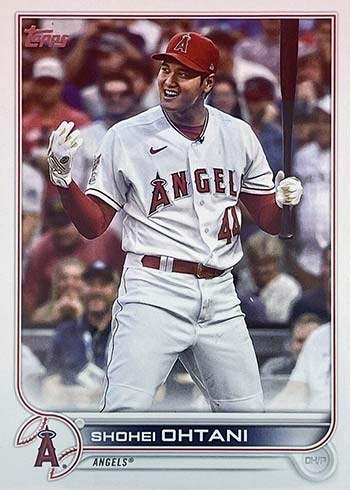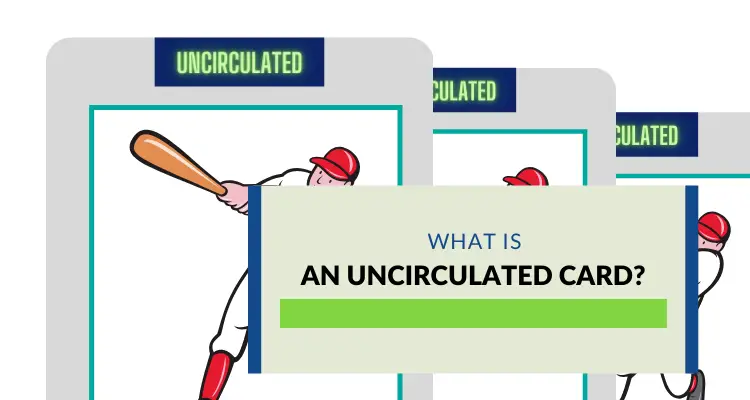 Ryan Barone (@ballcardgenius on TikTok, Card Expert) is a lifelong member of the hobby. He has been quoted in PSA Magazine, and his content has regularly been mentioned in “Quick Rips” (the Topps RIPPED Newsletter) and across other hobby publications. Join his 8,600 followers on TikTok! hello@ballcardgenius.com; Last Time Ago LLC dba Ballcard Genius.
Ryan Barone (@ballcardgenius on TikTok, Card Expert) is a lifelong member of the hobby. He has been quoted in PSA Magazine, and his content has regularly been mentioned in “Quick Rips” (the Topps RIPPED Newsletter) and across other hobby publications. Join his 8,600 followers on TikTok! hello@ballcardgenius.com; Last Time Ago LLC dba Ballcard Genius.
Affiliate Disclosure: This post contains affiliate links. As I am a part of the eBay Partner Network and other programs, if you follow these links and make a purchase, I’ll receive commission. As an Amazon Associate, I earn from qualifying purchases.
In every Topps release you can count on a few things—a new checklist, SSPs, SPs, parallels, and base cards. Meaning, a set like 2022 Topps Series 2 has a new crop of rookie cards, but it also offers a number of short prints in addition.
These short print cards typically include photo variations of current players or the inclusion of retired legends.
Super short print or “SSP” cards are printed in far lesser quantities than “common” cards, and are generally more valuable. In fact, if you ranked card types by print quantities starting with the most scarce, the order would be “ultra,” SSP, SP, and base.
Here is an example of Ohtani SPs from series 1, courtesy of Beckett.com, which always has great guides and galleries for the different SPs and variations from each release.


How to Identify Short Print Cards
If you’re looking at the above cards and thinking these look like normal baseball cards, you aren’t wrong. In fact, identifying SPs is often difficult from just the front of the card, and often requires you to turn the card over. Even so, there isn’t usually any obvious indicator on the back either, but you can find the info.
Read More: Baseball Signature Identifier
Missing an SP gets the best of us! Here is me completely missing a Mickey Mantle SP from 2021 Archives:
Short Print Card Codes
So, to properly identify a short print card, turn the card over to its back and look to the small writing on the bottom. There will be a long number, and based on the last three digits of that number, you’ll know if you have a regular base card or a short print (or SSP or Ultra SP).
Thus, another reason why I love to consult Beckett for these things is the explanation of each code, and what it identifies.

In this case, if the last three numbers of the code in the fine print are 543, it’s a base card and not sa short print, but if the last three numbers of the code are 560, then it’s a short print, 561 for an SSP, and 562 for an Ultra SP.
Of course when you’re opening packs of cards, you don’t always think to flip the cards over and look at that tiny number, right?
So while there isn’t a concrete way to identify an SP from the front of the card, there are a few clues you can pick up on.
For example, look back to the Ohtani cards above—now that you know they are short prints, do they look a bit different? For me, one he is wearing an alternative jersey and no helmet, and other he is hitting, but in a cap and not a helmet, and it looks like a non-game situation.
Now, look at his base card:
Pretty straightforward baseball action shot, right?
So when looking at cards from the front, some things that will usually tip you off to an SP include:
- Different uniforms like the player’s weekend jerseys
- Shots of players in street clothes or non-uniform pieces of clothing
- Playful and “joking around” photos
- Batting cages or dugout shots.
Topps Short Print Codes
All that said about codes, they are always changing! Thus, I thought it would be helpful to put together a living table that you can use to easily find and compare short print codes from over the years.
| Set | Base | SP | SSP | Ultra |
|---|---|---|---|---|
| 2022 Topps Series 1 | 543 | 560 | 561 | 562 |
| 2022 Topps Series 2 | 847 | 865 | 866 | 867 |
| 2022 Topps Chrome | 967 | 17 | 23 | NA |
| 2022 Topps Opening Day | 225 | 246 | NA | NA |
| 2021 Topps Series 1 | 213 | 230 | 231 | 232 |
| 2021 Topps Series 2 | 423 | 441 | 442 | 443 |
| 2021 Topps Chrome | 310 | 350 | 356 | NA |
| 2021 Topps Opening Day | 312 | 334 | NA | NA |
| 2021 Topps Update | 395 | 416 | 417 | 418 |
What’s the Difference Between an SP, Variation & Parallel?
To end, in this post you’ve heard three different terms—SP, variation, and parallel. Now, this might get a little confusing, but here is an attempt at a clear explanation.
Think of an SP as one major umbrella category, and the fact that all variations and parallels can be considered SPs because they are probably printed in lesser quantities than regular base cards. This is probably more true of variations than parallels. Meaning, it’s much harder to make that a hard and fast rule for parallels because while something like a refractor might be a parallel in shorter print, it’s not really in “short print” and thus isn’t all that rare. But, relatively, it’s rarer than a base card, sure.
Now, when looking at variations vs. parallels, the answer is right there in the names—a variation is the same player but a different photo, while a parallel is the same photo but a different design. So when we talk about prizms and refractors, these are parallels, but when we talk about different photos, like the big head cards or action shots, etc., these are variations.
So, hope that helps clear the air, and happy SP hunting! Be sure to check those card backs, especially for stars and rookies, and consult Beckett or Cardboard Connection for SP codes and variation galleries!



